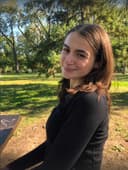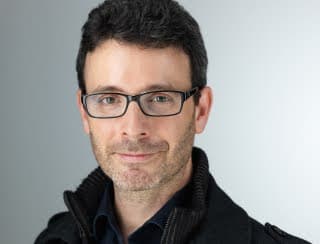On a blustery January evening on Montreal’s Boulevard Saint-Laurent, Jews of all ages kept warm by threading spools of chunky yarn into DIY textile looms. At the Museum of Jewish Montreal, multidisciplinary artist and art historian Shannon Stride hosted a lively workshop titled “Braiding the Threads of a Jewish Life.” Through weaving, Stride emphasized that embracing and reinvigorating traditions tightens the threads of collective Jewish history.
After receiving an MA in Art History from Concordia University in 2019, Stride converted to Judaism. Though she does not have an ancestral link to the religion, Stride finds meaning in its spirituality and its rich contributions to the art and weaving world.
After receiving a microgrant for her weaving in 2024, Stride began to research Jewish weaving traditions from around the world. Stride is ethnically Irish on her mother’s side, so she was inspired to “combine Jewish iconography and symbols from Jewish weaving traditions [with Irish weaving conventions]… to try to bring these two parts of myself, that I value very intensely, together.” And that was just what was achieved through this night of schmoozing, crafting, and sharing.
As guests entered the museum’s doors, staff ushered them into the main hall. Tables were adorned with colourful art materials, framed by warm string lights lining the central banister. Each weaver received their own kit, complete with a beginner-friendly how-to guide, a beater, and a wooden frame. While weaving is traditionally practiced on lofty looms, the smaller and far less expensive frames provided an entry into the world of textile arts—and Jewish textile tradition—without a large commitment or financial burden.
Jewish women were central to the weaving process, especially in the Bauhaus movement in Germany and the bustling garment industry of Montreal and New York City. Beyond the diverse trends in garment production from Bukharia to Eastern Europe, Germany, and the Lower East Side, Stride spoke on the multifold ways that immigrant Jews adapted weaving techniques to their new locales.
“Jews combined Hebrew and other local languages to create new dialects like Yiddish and Ladino, and created new ways of making garments that fit those climates, but also fit their own religious or cultural needs,” Stride said.
With participants conversing in French, English, and Hebrew during the program, it is fitting that it highlighted the linguistic creativity of our forebearers through an activity where you could craft something of your own.
Jewish life today stems from belief systems passed down from generation to generation, but equally important are the ways we infuse our traditions into our modern pastimes. Just as we reinvigorate traditional texts through discussion and comparison to current events or stirring sermons, the woven pattern of Judaism is held together by effort, appreciation, and care.
Stride marries Jewish tradition and contemporary art by “bringing these different threads of my own life, my own culture together into a tapestry [...] and then creating a workshop, creating space where people could do the same.” And so, with each humble frame, participants at the Museum of Jewish Montreal began the lifelong process of weaving their own narratives. Tonight, a woven bookmark, tomorrow, perhaps talit, challah covers, and our inextricably intertwined cultural identity.
If events of this nature sound interesting to you or your cool Jewish friends, check out the other events that the Museum of Jewish Montreal has in store for the 2025 season at https://museemontrealjuif.ca/event/
Powered by Froala Editor






